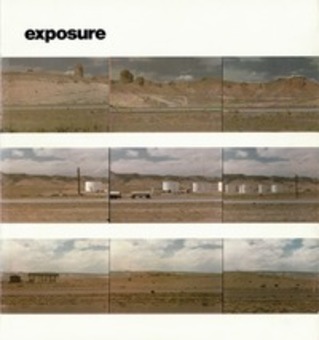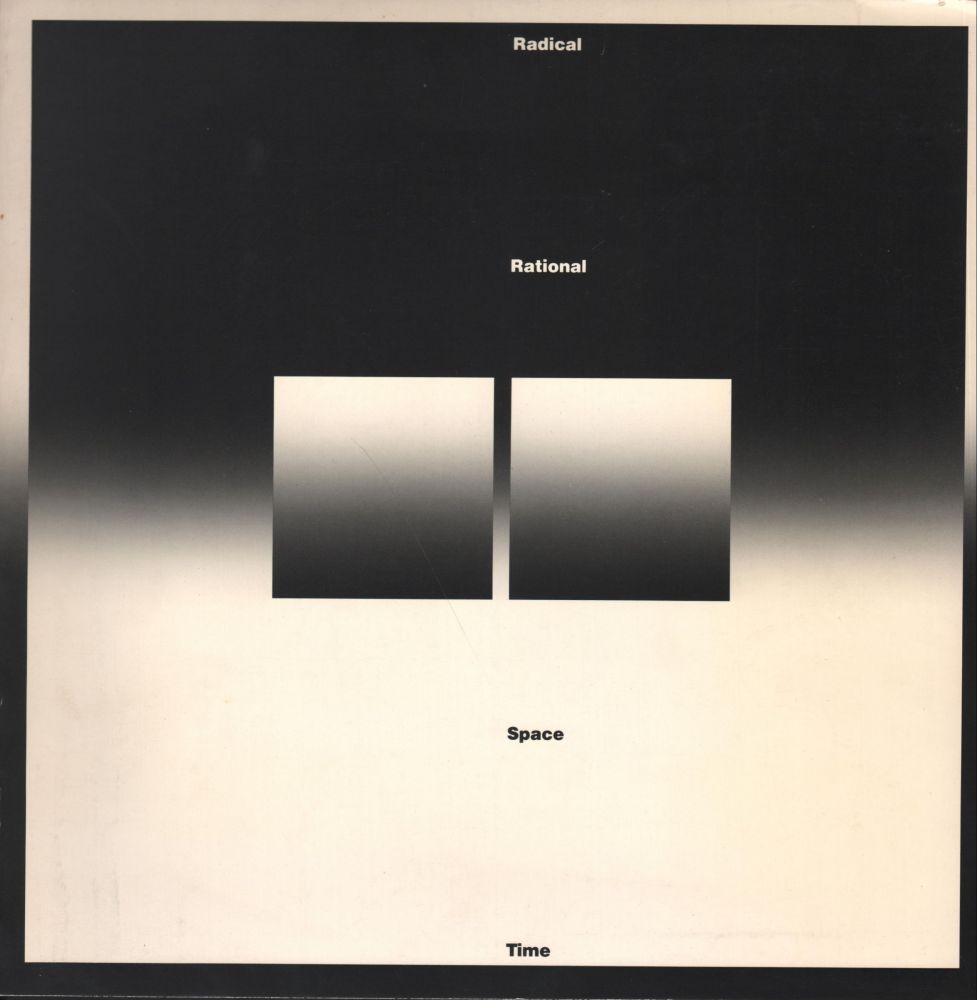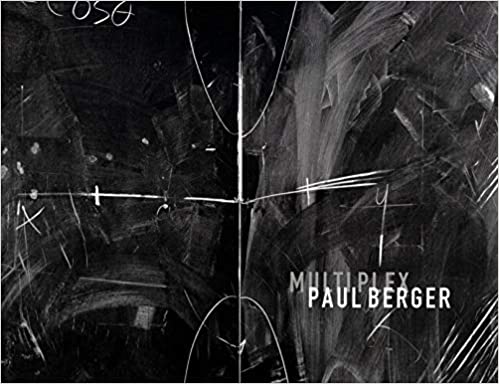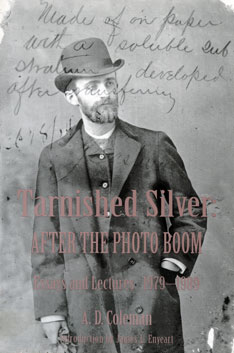 [This is Part 2 of the second in a series of decade-by-decade posts of material from my archives. For the first essay in this series, click here. For the first part of this essay, click here.
[This is Part 2 of the second in a series of decade-by-decade posts of material from my archives. For the first essay in this series, click here. For the first part of this essay, click here.
Having lost my platforms at the Village Voice and the New York Times in 1973 and 1974, respectively, by 1980 I had failed to find any comparable replacements. Instead, I had developed a substantial adjunct teaching position in the Department of Photography, Tisch School of the Arts, New York University as my main source of income. (Click here for a brief account of that commitment.)
Despite having published two well-received books — The Grotesque in Photography (1977), the first and still the only survey of this mode, and Light Readings: A Photography Critic’s Writings, 1968-78 (1979), my first collection of essays — I had no offers for regular publication of my writings save for a column in the monthly magazine Camera 35. Additionally, I took whatever opportunities I could find to publish in any available vehicle for my work — in this case, Exposure, the quarterly journal of the Society for Photographic Education (Vol. 18, no. 1, 1980). These and other such comparatively small-circulation, specialized publications put my work from that period before a more narrow-cast readership than I’d enjoyed previously.
 As an upside to these conditions, the pressures involved in meeting weekly and bi-weekly deadlines lifted once I stopped writing for those papers. This enabled me to spend more time crafting my prose output, and, beyond that, considering and formulating the hermeneutic issues that underpinned my exegetical practice. I had taken a first stab at that back in 1974, in “Because It Feels So Good When I Stop,” a lecture originally published in Camera 35 and then reprinted in Light Readings. You’ll find it here at the blog. The rumination that begins below builds on and extends some of those thoughts. This is the complete text of an address delivered at the National Conference on the Society for Photographic Education, Stevensville, New York, March 17, 1980. You will find it included in my 1996 collection of essays Tarnished Silver: After the Photo Boom.
As an upside to these conditions, the pressures involved in meeting weekly and bi-weekly deadlines lifted once I stopped writing for those papers. This enabled me to spend more time crafting my prose output, and, beyond that, considering and formulating the hermeneutic issues that underpinned my exegetical practice. I had taken a first stab at that back in 1974, in “Because It Feels So Good When I Stop,” a lecture originally published in Camera 35 and then reprinted in Light Readings. You’ll find it here at the blog. The rumination that begins below builds on and extends some of those thoughts. This is the complete text of an address delivered at the National Conference on the Society for Photographic Education, Stevensville, New York, March 17, 1980. You will find it included in my 1996 collection of essays Tarnished Silver: After the Photo Boom.
When I delivered this talk and published the text thereof, roughly 40 years ago, it seemed unnecessary to identify and thereby implicate in my argument the two individuals to whom I refer only by initials here. Four decades later it seems both coy and pointless to conceal their names. “L” was Leroy Searle, and “P” was Paul Berger.
This is the second and final part. Click here for Part 1. — A.D.C.]
•
Choice of Audience/Choice of Voice (cont’d)
… With those as the essential elements, we can now approach the process of determining the givens, the variables, and the unknowns in any particular critical equation.
It is safe to assume that at any point in time in any critical equation at least one element will be in a state of change. Readerships are not constant: they shrink and grow, their interests shift, and their levels of knowledgeability fluctuate. Publications change — sometimes with their readership, sometimes with their editorship, sometimes for economic reasons, and continuously in terms of their longevity and stature in the field. The thrust of contemporary work in any medium changes regularly, and shifts in the hermeneutics require adaptations in the exegetics. Finally, critics change.
Thus any critic at the outset of his/her critical activity would be well advised to ask a specific set of questions of him/herself, and to re-ask those questions periodically, especially when changing vehicles in mid-stream, as critics are so often forced to do.
The crucial question is, To whom is my work addressed? To put it another way, who do you think you’re talking to? By this I mean quite specifically what audience do you as a critic desire and direct your work towards conceptually?
There are many alternatives, after all. One can write to the artists, to other critics, to the hard-core art audience, to the general public, and to teachers and students. One can address those within a particular geographic territory, correspond with those outside that region, or ignore physical location altogether. One can parlay such factors in many ways.
The only option one does not have is pretending that the question is irrelevant. Brecht once cautioned writers who allowed themselves to be “relieved of concern for the destination of what [they have] written” with these words:
“I … want to emphasize that ‘writing for someone’ has been transformed into merely ‘writing.’ But the truth cannot merely be written; it must be written for someone, someone who can do something with it.”[i]
The answer to that question, then, taken in tandem with the answer to the question of what the critic wishes to write about, forms in effect a statement of intent. This gives the critic a stable jumping-off point. The answers need not be forever fixed and immutable, but lack of clarity in these decisions leads to internal conflict and will increase the difficulty of writing effective criticism on a long-term basis.
Conversely, clarity in answering these questions makes it possible to answer other questions more easily. The next one would be, What work is addressed to the same audience the critic has chosen, and what work beyond that is pertinent also? Going back to the story with which I began, we could say that the work of the photographer I called P was not addressed to the audience of the Northwest Sunday Times‘s critics. P has created a body of work whose appreciation requires an extensive knowledge of photography’s history, visual communications and linguistic theory, and other reference points not commonly held. Consciously or not, P has chosen to direct his work to a very small segment of the audience. Not coincidentally, it’s a segment to which L’s criticism is also directed, and a segment reached fairly effectively by the primary vehicle for L’s work. A balanced equation, in short. But we might also agree that it would be difficult and perhaps futile for the NST‘s critics to try to make P’s work accessible to a readership which lacks the necessary reference points, and that it would be unrealistic for P (or L) to expect that either the NST critics or their readership would be drawn to this work.
Does this mean that P shouldn’t show his work, or that he should not show it in the Northwest, or that the Northwest audience will never understand it, or that no critic could conceivably make that work accessible to that audience? No.[ii] But that audience’s understanding of photography will have to be nurtured by one or more local critics committed to educating an audience for photography by starting at the beginning and establishing the appropriate and necessary reference points.
The best way to do so will be to use as examples work with which the audience can establish some kind of harmonious and rewarding relationship on its own, without the critic’s exegesis being the audience’s only route of access to it. Only after such a critical groundwork has been patiently laid could we expect P’s work (or L’s explication of it) to be met with anything more than blank stares. Such criticism as this groundwork mandates may well seem simplistic to the already sophisticated; most critics scorn it — and, implicitly, discount the audience that needs it in order to progress. Yet such criticism surely serves a useful function. Those who choose to teach elementary school are teachers nonetheless.
We now come to the matter of the forum, and the issue of the real versus the ideal. Aside from every writer’s perennial desire for complete freedom of expression, sufficient space to build any line of reasoning, adequate compensation for one’s labors, and compatibility with the editorial staff, what kind of vehicle is appropriate for one’s particular brand of criticism?
Is it essential that your writing be accompanied by illustrations — and, if so, what reproduction quality do you consider necessary? To what extent will frequency of publication affect your personal working rhythms? Is the frequency of publication of a particular periodical suitable to your critical style and emphases, or counterproductive? (For example, spontaneous response to first encounters with bodies of work is better fitted to weekly-newspaper format than is scholarly meditation.) Does the forum in question have an emphasis of its own — for example, darkroom craft, visual anthropology, photo education? Does that emphasis connect with your own areas of concern? Do you have an emphasis, and is it relevant to the magazine’s purpose? Do you want to appear in a publication whose contributors share a common set of ideas and attitudes, or do you prefer an active divergence of opinion? Do you prefer to appear in a periodical which specializes in your medium, or in the arts, or would you rather be writing in a more generalized context?
Linked directly to this are the questions of who the actual readership of the periodical is (as distinct from the critic’s ideal constituency); what the readership’s relationship is to the general thrust of the publication; what the critic can reasonably expect of that readership, and vice versa.
These last questions, unfortunately, are among the most difficult to answer, because the necessary information is hard to obtain. Few publications can provide accurate readership profiles to prospective contributors, although most editors know — or think they know — who their readers are. Thus the writer is generally forced to combine intuition, hearsay, and speculation with extrapolation from the usually small amount of direct feedback from and personal encounters with readers which an author receives. Consequently, it can take a long time — years, in fact — of writing for a particular publication before a writer develops a clear sense of who is actually reading what s/he is saying, and how that statement is being understood by that constituency.
I think it’s implicit that what I’ve said so far that, from my standpoint, the ideal situation for a critic is not only to be operating on the basis of a fundamentally balanced equation but, additionally, to have a long-term commitment to (and from!) at least one appropriate vehicle. Long-term involvement with an inappropriate vehicle — one in which the critic’s emphases and ideas are pronouncedly unrelated to the actual readership’s interests — will achieve little but the generation of frustration and stress on both sides.
Frequently there is value in making a one-shot appearance in such a forum; it’s a variety of guerrilla tactic which keeps all concerned on their toes. Similarly, there’s nothing innately wrong in making one-shot appearances in a diversity of sympathetic publications. However, the consequent necessity of establishing one’s reference points for a new audience in every essay is time-consuming, tedious, and ultimately counterproductive, since this is the most difficult way of all to construct a coherent, consistent, and useful line of reasoning and contribute effectively to a critical dialogue. “Same time, next week” (or month, or quarter) is unquestionably the most desirable assumption for a critic and his/her audience to be able to make concerning their relationship.
•
 If some of what I’ve outlined here seems applicable to artists and their decisions about the relation of their work to its audience, that isn’t coincidental. I consider it relevant also to editorial staffs of publications, and to members of the audience who may very legitimately ask if the criticism they’re getting is pertinent to their concerns and reference points.
If some of what I’ve outlined here seems applicable to artists and their decisions about the relation of their work to its audience, that isn’t coincidental. I consider it relevant also to editorial staffs of publications, and to members of the audience who may very legitimately ask if the criticism they’re getting is pertinent to their concerns and reference points.
For the critic, the equation I’ve suggested its a way of evaluating publication opportunities and of identifying the path of least resistance and optimum flow — which, I should add, is not necessarily the route one should always follow. For artist and audience, it may be a means for understanding the set of relationships which pertain between the work, the critic, the forum, and the audience, and of evaluating the performance of critics operating within particular configurations thereof.
(Part 1 I 2)
•
Notes:
[i] “Writing the Truth: Five Difficulties,” translated by Richard Winston, in Art in Action: Twice a Year 1938-1948, 10th Anniversary Issue (New York: Twice A Year Press, 1948), p. 126.
[ii] Indeed, one local critical in that region is trying to do just that. Significantly, his background is in photography, and his primary vehicle is a regionally-oriented photography newsletter.
•
This post sponsored by a donation from Carlyle T.
•
Special offer: If you want me to either continue pursuing a particular subject or give you a break and (for one post) write on a topic — my choice — other than the current main story, make a donation of $50 via the PayPal widget below, indicating your preference in a note accompanying your donation. I’ll credit you as that new post’s sponsor, and link to a website of your choosing.









This is really important thinking and solidly based on your extensive personal experience. Finding an appropriate audience for one’s personal concerns and manner of expression are a great and necessary challenge.
Thanks for your goods words.
Too many people think of critics and their production as mysterious. I don’t believe that critics actively cultivate that perception (at least not beyond the seductive appeal to some of jargon). Nonetheless, it accumulates around them, as in the vague phrase “the power of the critic.”
In the interest of transparency (including to myself), at intervals over the years I have tried to articulate both the premises of my work and the professional situation(s) in which I generate it and make it available to my readers. I believe that these backstage tours at least demystify my own work, if not that of others in the field. They also help me to grapple with “the condition my condition is in.”
Looking back, I see that I have written far more on this subject than any of my colleagues. I never intend to put my words in their mouths, but surely they share some of my intentions, methods, and experiences.